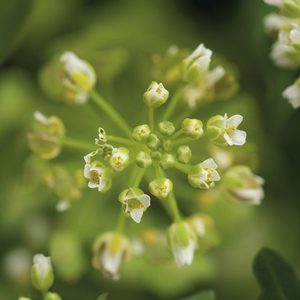ISU researchers transform pennycress into a crop

SOURCE: Illinois State University
October 1, 2020
BY Illinois State University
Though farmers consider pennycress (Thlaspi arvense) nothing more than a weed, Illinois State Professor of Genetics John Sedbrook is working to change their perspective—and the plant itself. Sedbrook and his student researchers in the School of Biological Sciences are genetically modifying pennycress as part of a multistate, multi-institutional effort funded by a five-year, $10 million USDA grant and a $13 million Department of Energy grant.
The researchers are attempting to transform the plant into a commercially grown cover crop that would be a boon to farmers and the environment. The harvested plant would be processed into biofuel, jet fuel, animal feed, and other products.
Advertisement
“This would not only help the environment, but also produce oilseeds that farmers can sell in these economically challenging times,” Sedbrook said. “Plants like pennycress take carbon dioxide out of the atmosphere to grow. Instead of adding to carbon in the atmosphere by digging for fossil fuels, you’re taking carbon that’s already there. So it’s a zero-sum game.”
Domesticated pennycress could be grown as a cold-resistant, high-yield oilseed crop across the central United States, where nearly 80 million acres of land devoted to corn and soybeans sit dormant in the winter months. Sedbrook said the same process was used in the 1960s to convert rapeseed into canola oil, a relative of pennycress that is in widespread use today.
Illinois State researchers—Professor of Water Ecology Bill Perry, Assistant Professor of Crop Science Nicholas Heller, and Professor of Soil Science Rob Rhykerd—are investigating how planting pennycress on otherwise fallow fields could also help farmers reduce soil erosion and nutrient loss, two factors that are imperiling water quality and aquatic life locally and as far downstream as the Gulf of Mexico.
Advertisement
This research has been ongoing for 10 years with the latest grant awarded in 2020. Illinois State researchers are currently working under the umbrella of the Integrated Pennycress Research Enabling Farm and Energy Resilience (IPREFER) program with colleagues at Western Illinois University, the University of Minnesota, The Ohio State University, the University of Wisconsin-Platteville, and the St. Louis-based crop development company CoverCress Inc.
Related Stories
The U.S Department of Energy Bioenergy Technologies Office, in partnership with the Algae Foundation and NREL, on July 21 announced the grand champion and top four winning teams of the 2023 - 2025 U.S. DOE AlgaePrize Competition.
The USDA significantly increased its estimate for 2025-’26 soybean oil use in biofuel production in its latest World Agricultural Supply and Demand Estimates report, released July 11. The outlook for soybean production was revised down.
U.S. fuel ethanol capacity fell slightly in April, while biodiesel and renewable diesel capacity held steady, according to data released by the U.S. EIA on June 30. Feedstock consumption was down when compared to the previous month.
The U.S. EPA on July 8 hosted virtual public hearing to gather input on the agency’s recently released proposed rule to set 2026 and 2027 RFS RVOs. Members of the biofuel industry were among those to offer testimony during the event.
The USDA’s Risk Management Agency is implementing multiple changes to the Camelina pilot insurance program for the 2026 and succeeding crop years. The changes will expand coverage options and provide greater flexibility for producers.
Upcoming Events










